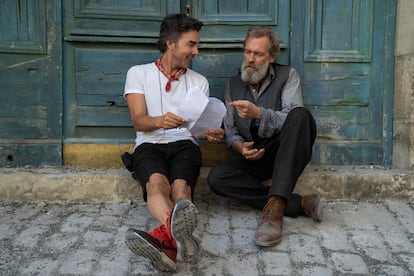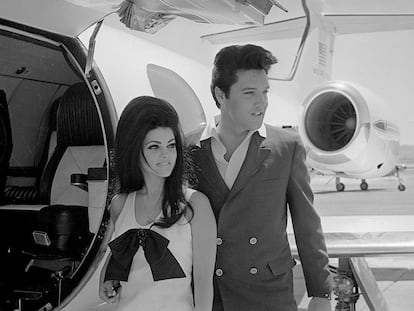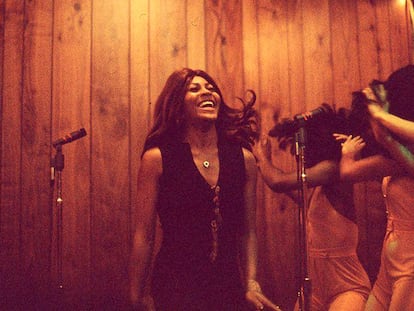‘All the Light We Cannot See’: Tenderness, evil Nazis and the magic of the radio
The miniseries set in occupied France is paradigmatic of what abounds on Netflix: good workmanship and shallow characters. But it does a good job at capturing how the World War II generation found company and consolation on the airwaves
It is common for adaptations of successful books to a short series or movie to disappoint their readers: it is impossible to condense the full complexity of a story told in hundreds of pages into a few hours. The case of All the Light We Cannot See, based on Anthony Doerr’s novel set in World War II that won the Pulitzer for fiction in 2015, is paradigmatic of what abounds on Netflix. The four-episode miniseries is well-crafted but thin on substance. It is impeccable in production, aesthetics, settings... But the characters lack depth.
That’s the principal flaw of the series created by Steven Knight (Peaky Blinders), which, despite everything, is watchable. Compared to the many years covered by the novel, the series begins in the final stretch, in the photogenic town of Saint-Malo, Brittany, in the north of Nazi-occupied France, waiting for the Normandy landings. And it narrates the past through flashbacks. That doesn’t work badly at all. What is left over is Manichaeism: the Nazis are cruel and evil all the time, even when they are at leisure or with their families, except one who is good, an orphan boy forcibly recruited for his technical skills (Louis Hofmann).
The protagonist is a blind French girl (well played by Aria Mia Loberti and Nell Sutton, both blind, at different ages), as heroic as her father and uncle. There is tenderness, yes, around the character of the girl and then young woman Marie-Laure LeBlanc, though at times sentimentality is overused. The fact that all the dialogues are in English (and not in French or German, depending on who and when) detracts from the story’s verisimilitude.

Marie-Laure’s story underlines her ability to overcome her visual disability in the midst of the most horrible context possible: she is intelligent, she knows how to find solutions to everything. The plot has something more exciting, even today but especially for that generation: the power of the radio. What unites the blind girl and the good Nazi throughout the story is their passion for shortwave broadcasts. They both listened to those of a mysterious French professor; she would later take to the microphone herself.
A little context: at that time, radio was not only the mass media par excellence. It also respected no borders, because shortwave broadcasts were followed thousands of miles away. The Spaniards who lived through the Civil War felt the same way about the access to different voices of the world as the characters from the series did. Even more: radio amateurs could broadcast their own content, what today would be akin to uploading a podcast to whatever platform.
So, in the midst of the horror of war, two protagonists who do not know each other and remain distant will find comfort in the same warm voice that speaks to them intimately — the magic of the radio. And in the war it was also a weapon: it was used to send coded messages from the resistance or Allied espionage, and the Nazis persecuted, with all their harshness, anyone who broadcast on their own. Then radio became something closer and more local, with the transition first to medium wave and then to FM. But just as it did then, it still keeps us company as no other medium can aspire to do. The new generations, tormented or not, look for that same connection in YouTubers, podcasters, Instagrammers, TikTokers or Twitchers. We still need someone to talk to us.
There is another parallel plot, the search for a valuable diamond taken from a museum, which ends up being secondary and dispensable. You can be aware of all the flaws of All the Light We Cannot See and still have a good time with it. However, it’s a nice story that could honestly have been told better.
Sign up for our weekly newsletter to get more English-language news coverage from EL PAÍS USA Edition
Tu suscripción se está usando en otro dispositivo
¿Quieres añadir otro usuario a tu suscripción?
Si continúas leyendo en este dispositivo, no se podrá leer en el otro.
FlechaTu suscripción se está usando en otro dispositivo y solo puedes acceder a EL PAÍS desde un dispositivo a la vez.
Si quieres compartir tu cuenta, cambia tu suscripción a la modalidad Premium, así podrás añadir otro usuario. Cada uno accederá con su propia cuenta de email, lo que os permitirá personalizar vuestra experiencia en EL PAÍS.
¿Tienes una suscripción de empresa? Accede aquí para contratar más cuentas.
En el caso de no saber quién está usando tu cuenta, te recomendamos cambiar tu contraseña aquí.
Si decides continuar compartiendo tu cuenta, este mensaje se mostrará en tu dispositivo y en el de la otra persona que está usando tu cuenta de forma indefinida, afectando a tu experiencia de lectura. Puedes consultar aquí los términos y condiciones de la suscripción digital.
More information
Archived In
Últimas noticias
Most viewed
- Sinaloa Cartel war is taking its toll on Los Chapitos
- Oona Chaplin: ‘I told James Cameron that I was living in a treehouse and starting a permaculture project with a friend’
- Reinhard Genzel, Nobel laureate in physics: ‘One-minute videos will never give you the truth’
- Why the price of coffee has skyrocketed: from Brazilian plantations to specialty coffee houses
- Silver prices are going crazy: This is what’s fueling the rally












































